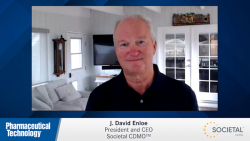
OR WAIT null SECS
- About Us
- Advertise
- Contact Us
- Editorial Info
- Editorial Advisory Board
- Do Not Sell My Personal Information
- Privacy Policy
- Terms and Conditions
© 2025 MJH Life Sciences™ , Pharmaceutical Technology - Pharma News and Development Insights. All rights reserved.
Opportunities and Challenges in the Development of Stem-Cell Therapies
Stem cells are being developed to treat a diverse set of conditions, including spinal cord injury, amyotrophic lateral sclerosis, macular degeneration, Parkinsons disease, and Type I diabetes. But the challenges in moving from the laboratory to the clinic are formidable.
Stem cells are being developed to treat a diverse set of conditions, including spinal cord injury, amyotrophic lateral sclerosis, macular degeneration, Parkinsons disease, and Type I diabetes. But the challenges in moving from the laboratory to the clinic are formidable. The California-based biotech company, Geron, pioneered clinical trials using embryonic stem cells, with a Phase I trial using oligodendrocyte precursors derived from embryonic stem cells to treat spinal cord injury approved in 2009. In November 2011, however, Geron announced it would be discontinuing all of its stem-cell development work, citing cost and regulatory complexity as factors in that decision.
At the BIO International Convention, a panel will convene to discuss the current landscape for developing stem cell therapies in a breakout session titled Opportunities and Challenges in Developing Innovative Stem Cell Therapies. BioPharm International spoke with one of the session’s presenters, Dr. Armand Keating, Epstein Chair in Cell Therapy and Transplantation, University of Toronto about the challenges facing developers. According to Keating, funding remains the biggest challenge in moving from laboratory to clinic. He points out that unlike small-molecule development, stem-cell development is still very much rooted in academia. The traditional sources of funding available to academics are ill-suited or inadequate to fund preclinical validation studies, manufacturing scale-up studies, or the clinical trials themselves. While an organization such as the California Institute for Regenerative Medicine is able to provide some funding for early-stage clinical trials, later-stage trials will be far too expensive to be carried out at academic research centers, he says.
Clarification of statement in podcast: There have been approximately one million bone marrow transplants performed worldwide since 1959.


